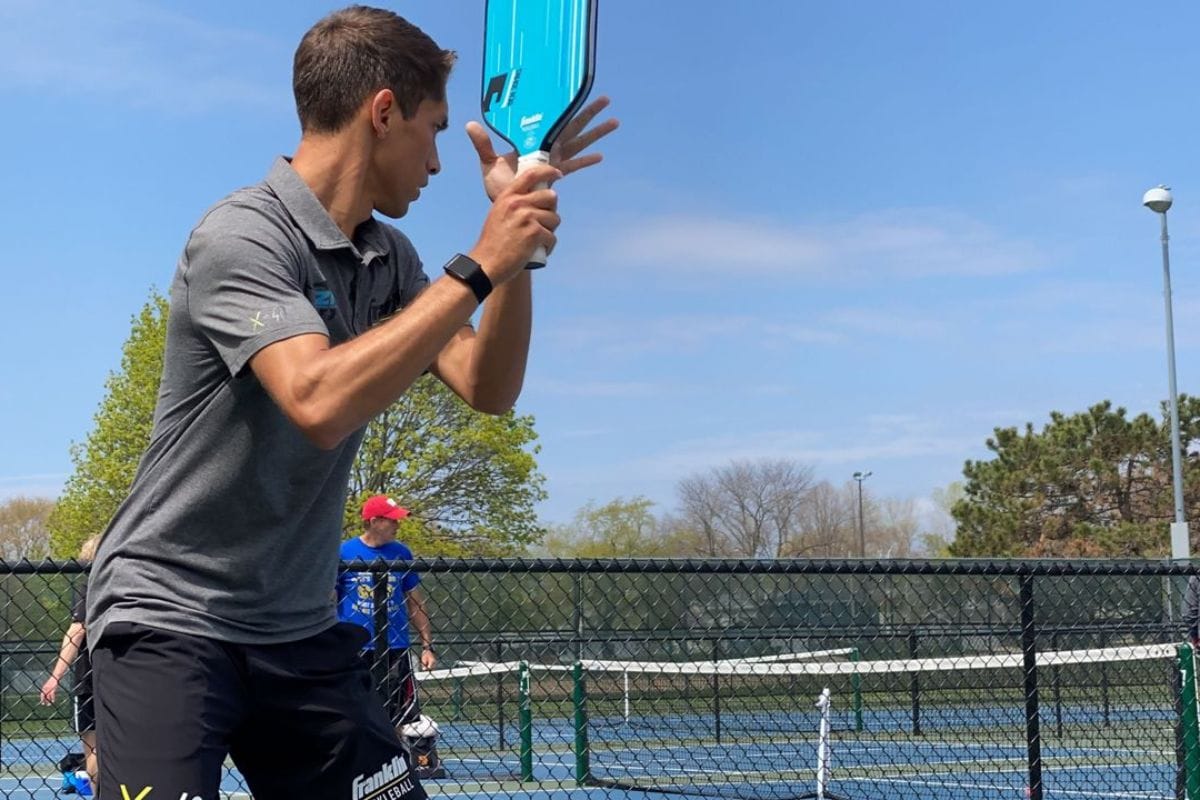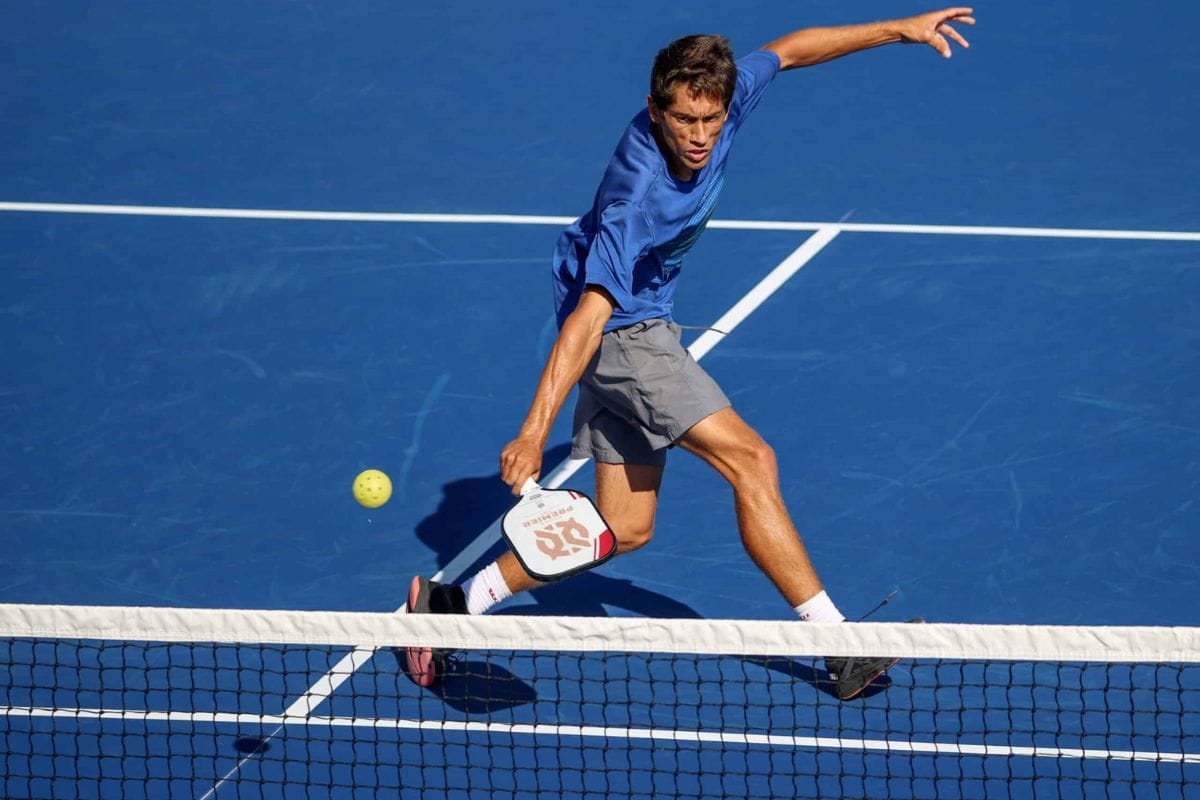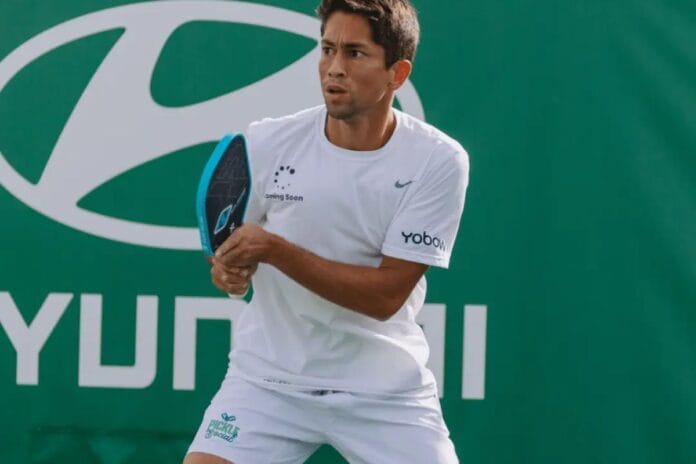Zane Navratil on Evolving Pickleball Strategies: As pickleball evolves, so do the strategies at the professional level. In a recent episode of the Briones Pickleball Podcast, Zane Navratil shared his insights on the shifting dynamics in the game’s top tiers.
Increased Aggression and Speed
One of the most notable changes in pickleball strategy is the surge in aggression and speed. The game is now characterized by faster serves, aggressive returns, and rapid speed-ups. “The game has moved towards faster serves, returns, and speed-ups,” Navratil explains. Dinking, once a cornerstone of strategy, is becoming less prevalent as players opt for aggressive shots that challenge their opponents more intensely.
Navratil highlights that the traditional dinking strategy is losing its edge as players become more adept at reading and attacking patterns. “Dinking is becoming less prominent as players prioritize aggressive shots,” he observes. The shift towards a more aggressive style is driven by players’ improved ability to execute precise shots and seize opportunities to control the game.

The Role of Body Shots
Another significant strategic development is the increasing use of body shots. Navratil discusses how targeting an opponent’s body can be a potent tactic. “Hitting the ball directly at an opponent’s torso can disrupt their play and force them to react quickly,” he notes. This approach can lead to mistakes and create openings for further attacks.
Despite its potential effectiveness, body shots are not yet universally adopted. Navratil suggests that this may be due to players’ reluctance to integrate this tactic into their games. “Body shots are not yet a widespread practice,” he points out. However, as players start to recognize their benefits, this strategy could become a more significant part of high-level play.
The Advantage of Being Shorter in Pickleball
Navratil also explores the physical advantage of being shorter in pickleball. He observes that while taller players benefit from reach and height, they often struggle with dinks and low balls. “Taller players face challenges with dinks and low balls,” he notes. They need to bend down to reach these shots, which can be less advantageous compared to shorter players who have a lower center of gravity and greater maneuverability.
Some of the top defensive specialists and resetters in pickleball are shorter players, according to Navratil. “Shorter players can more easily get into position to make precise shots and defend against aggressive plays,” he explains. Although tall players have strengths such as power and reach, shorter players often excel in quick, defensive play.
Looking ahead, the strategies and physical attributes that define professional pickleball will continue to evolve. The emphasis on increased aggression and strategic use of body shots reflects a shift towards a more dynamic and fast-paced game. “The focus on increased aggression and the strategic use of body shots indicate a shift towards a more dynamic and fast-paced game,” Navratil says. Additionally, the advantages of being shorter in terms of agility and defense underscore how different physical traits can impact performance.

News in Brief: Zane Navratil on Evolving Pickleball Strategies
In a recent Briones Pickleball Podcast episode, Zane Navratil discussed evolving pickleball strategies at the professional level. He highlighted a trend toward increased aggression and speed, with faster serves and aggressive returns replacing traditional dinking. Navratil also noted the growing use of body shots, which disrupt opponents and create scoring opportunities, though this tactic is not yet widespread. Additionally, he observed that shorter players often have an advantage in agility and defense, as they are better at handling low balls and quick movements. The shift toward a faster, more dynamic game and the strategic use of body shots reflect the ongoing evolution of pickleball, requiring players to continuously adapt their tactics.
ALSO READ: Morgan Evans’ Tips to Counter Pickleball Bangers: 2 Key Strategies


